Gina Holmes's Blog, page 4
August 20, 2017
Go with the Flow
 By Marcia Lee Laycock, @MarciaLaycock
By Marcia Lee Laycock, @MarciaLaycockI stared at the small rubber raft, then peered at the mighty Yukon River, the third largest river in North America. My friends had left the raft for me to use to get to their cabin about fifty miles downriver from Dawson City. The raft looked very small. I knew it was a bit risky, but I remembered my friend’s words - “You won’t have to paddle much,” he’d said. “The current will take you.”
I tossed my pack into the small craft and launched. That’s when I noticed there was only one paddle. That concerned me, but I was already out into the current and heading north.
My efforts to control where I was going were, at best, pitiful, so I sat back and decided to ‘go with the flow.’ As the small raft carried me north, at a leisurely spin, the silty water hissed against the rubber of the small craft. The wilderness was beautiful, vast, and, at times, overwhelming. I felt tiny and rather helpless. Seeing the massive form of a grizzly lumbering through the bush on an island only a few strokes away didn’t help.Watching the rain descend across a small valley and head directly for me was a bit disconcerting. And realizing that at times I was almost at a standstill because of the headwinds was more than a little frustrating. But all I could do was trust the current to get me there and do what I could with my small paddle.
Taking a step into the world of publishing is a lot like launching a small rubber raft onto a mighty river even though you only have one paddle to steer it. But I believe there is One who controls the current. Like my journey on the Yukon, our efforts to control our careers, and indeed, our lives, are often futile. But when we realize we can trust the One in control, we can take joy in the journey, though there will be strong eddies, rain and headwinds, and perhaps even a Grizzly or two along the way.
Our careers may not go the way we want at times, but we can be joyful because we know the One who is in control, trusting that everything that happens – the eddies that take us off course, the Grizzlies that frighten us, the rains that pour down and the winds that blow – are all for our good, meant to teach us, meant to draw us close to our Lord.
Ponder Psalm 139:16 – “…all the days ordained for me were written in your book before one of them came to be.”
So relax. Go with the flow. And enjoy the journey.
TWEETABLES
Go with the Flow by Marcia Lee Laycock (Click to Tweet)
Grizzly bears, driving rains and headwinds - feeling insecure on a mighty river.~ Marcia Lee Laycock (Click to Tweet)
God is in control of the current that carries you.~ Marcia Lee Laycock (Click to Tweet)
--------------------
One Smooth Stone
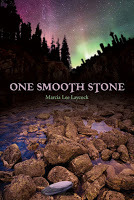 Desperate to escape his past, the police, and especially, God, Alex Donnelly picks a good place to hide - the Yukon wilderness - but he finds even there his is pursued. What will it take for him to discover that no matter how far you run, God will find you, and no matter what you have done, God will forgive you?
Desperate to escape his past, the police, and especially, God, Alex Donnelly picks a good place to hide - the Yukon wilderness - but he finds even there his is pursued. What will it take for him to discover that no matter how far you run, God will find you, and no matter what you have done, God will forgive you? Marcia Lee Laycock writes from central Alberta Canada where she is a pastor's wife and mother of three adult daughters. She was the winner of The Best New Canadian Christian Author Award for her novel, One Smooth Stone. The sequel, A Tumbled Stone was short listed in The Word Awards. Marcia also has four devotional books in print and has contributed to several anthologies. Her work has been endorsed by Sigmund Brouwer, Janette Oke, Phil Callaway and Mark Buchanan.
Marcia Lee Laycock writes from central Alberta Canada where she is a pastor's wife and mother of three adult daughters. She was the winner of The Best New Canadian Christian Author Award for her novel, One Smooth Stone. The sequel, A Tumbled Stone was short listed in The Word Awards. Marcia also has four devotional books in print and has contributed to several anthologies. Her work has been endorsed by Sigmund Brouwer, Janette Oke, Phil Callaway and Mark Buchanan.

Published on August 20, 2017 02:00
August 19, 2017
7 Character Non-Negotiables
 by Michelle Griep, @MichelleGriep
by Michelle Griep, @MichelleGriepWhat's more important . . . plot or character? Yeah, that's a loaded question. The answer is they're both important. But today let’s focus on character.
To make a really great character—meaning one that sticks in a reader's mind for a long time after they shut the book—you need to have a few essential elements. Okay, I lied. It’s more like seven.
1. Conflict
Is your character feeling like life is all rainbows and happiness and their pants aren't digging in at the waist? Too bad. You've got to mess it up all up for him. Make it rain. Break his happy bones. Give him a weight gain of five hundred pounds.
2. Desire
What does your character want? He's got to want something. A burp to ease his heartburn. A new Porsche. Maybe some Smart Wool socks because his toes are cold. What's his goal and what's motivating him to get there?
3. Confusion
Misdirect your character and you misdirect the reader. That's a good thing. As long as you're keeping your character guessing, you're keeping your reader guessing as well. Just make sure to tie things up by the end of the story and make everything clear.
4. Credibility
Your character has to deserve his losses and earn his victories. Coincidence won't cut it or your reader will slice you to pieces with a one-star review—a sharp, pointy, throwing-ninja star.
5. Flaws
Nobody loves a perfect character. They're annoying. Every character needs to have some kind of flaw, even if it's just a zit on the end of her chin. Okay, that's annoying too. Don't use that flaw. Make up a better one.
6. Cluelessness
Don't make your characters all knowing, unless your character is God, and that seems kind of heretical. The point is that it's fun for the reader to know something the character doesn't. Makes the reader feel all superior and hey-look-at-me-I'm-brilliant.
7. Success
Every now and then your character needs to be successful. Yeah, you're supposed to be upping the stakes, leading to a blood-gory climax, but along the way the reader needs a break. Put little park benches of wins for your character to give the reader a rest from the action.
Next time you're working on an epic, make sure to include these traits in your main characters.
TWEETABLES
7 Character Non-Negotiable by Michelle Griep (Click to Tweet)
What's more important . . . plot or character? Michelle Griep (Click to Tweet)
What traits do you need to include in your main characters? Michelle Griep (Click to Tweet)
__________

12 Days at Bleakly Manor
Imprisoned unjustly, BENJAMIN LANE wants nothing more than freedom and a second chance to claim the woman he loves—but how can CLARA CHAPMAN possibly believe in the man who stole her family’s fortune and abandoned her at the altar? Brought together under mysterious circumstances for the Twelve Days of Christmas, Clara and Ben discover that what they've been striving for isn't what ultimately matters . . . and what matters most is love.
 Author Michelle GriepMichelle Griep’s been writing since she first discovered blank wall space and Crayolas. She is the author of historical romances: The Innkeeper’s Daughter, 12 Days at Bleakly Manor, The Captive Heart, Brentwood’s Ward, A Heart Deceived, Undercurrent andGallimore, but also leaped the historical fence into the realm of contemporary with the zany romantic mystery Out of the Frying Pan. If you’d like to keep up with her escapades, find her at www.michellegriep.com or stalk her on Facebook, Twitter, or Pinterest.the next level.
Author Michelle GriepMichelle Griep’s been writing since she first discovered blank wall space and Crayolas. She is the author of historical romances: The Innkeeper’s Daughter, 12 Days at Bleakly Manor, The Captive Heart, Brentwood’s Ward, A Heart Deceived, Undercurrent andGallimore, but also leaped the historical fence into the realm of contemporary with the zany romantic mystery Out of the Frying Pan. If you’d like to keep up with her escapades, find her at www.michellegriep.com or stalk her on Facebook, Twitter, or Pinterest.the next level.

Published on August 19, 2017 02:00
August 18, 2017
10 Tips to Being a Co-Author
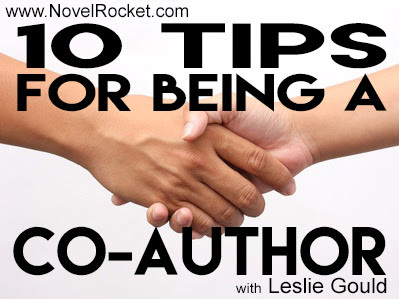 by Leslie Gould, @lesliejeangould (with input from her co-author Mindy Starns Clark)
by Leslie Gould, @lesliejeangould (with input from her co-author Mindy Starns Clark)1. Find someone with a similar writing style and voice.
Thankfully our agent, Chip MacGregor, recognized that Mindy and I have a similar writing style and voice, and he suggested that we work together. That has been a big boost to our process. We can seamlessly edit each other’s writing and keep the continuity of the story going without any big hiccups.
2. Find someone who has different strengths than you do.
Having a similar style is great, but it’s actually a benefit if you don’t share the same strengths. Mindy is amazing when it comes to plot, while I’m more character driven. Thankfully we complement each other in those two areas.
3. Meet in person (if at all possible).
Although, all of the work can be done over email, texting, phone calls, Skype, and whatever else works best for you, it really does help to see each other face-to-face. Mindy lives in Pennsylvania and I live in Oregon, but over the seven years we’ve been co-authoring, we’ve met in person multiple times. There’s nothing like brainstorming in person to get the ideas flying!
4. Make sure there’s a mutual understanding of who is responsible for what in the writing process.
We’ve used different approaches depending on the project. For example on some of our novels, one person wrote a rough first draft, then the second person heavily edited it and tied everything together, and then finally we both edited the story again. On other projects, we divided the writing of the first draft and then edited each other’s work after that.
5. Be ready to be flexible and rethink #4 when needed.
In the seven years Mindy and I have been working together, we’ve each had a parent die, Mindy sustained a serious injury, and my husband was deployed to Afghanistan for a year. Those were the biggies. And, as you can imagine, there were a whole lot of other little things going on too. You get the idea. Life happens. Thankfully, whenever one of us was facing an ordeal, the other was able to pick up the slack.
6. Do all you can to kill your pride, as early in the process as possible.
Co-authoring is a lot like marriage and parenting. This person WILL see you at your worst. Typos. Plot holes. Stupid stuff. And stressed over deadlines. There’s no way around it—the sooner you get over yourself the better.
7. Don’t think that you’ll be doing half the work of what you would do writing a novel on your own.
Co-authoring takes time. The preliminary work. The back and forth.The editing and polishing. The work isn’t cut in half. (On the other hand, it is less work than writing a novel on your own.)
8. Be prepared to do some of “your” best writing, ever.
Having a co-author means that you have a first “editor” whose name is on the front cover, along with your own. She wants your writing to absolutely shine. Your co-author is absolutely invested in making your writing the best it’s ever been.
9. Divide and conquer when it comes to marketing.
As with the writing, the marketing work isn’t cut in half but having a co-author definitely makes it easier. You can split up guest blog posts (like this one!) and other tasks. But the great thing is that having a co-author means your book—your baby—will get far more attention with both of you marketing it than any of the novels you market on your own.
10. Be prepared to miss your co-author when the project is done.
Writing can be a lonely business. Working with a co-author means you’re in contact through the process—and then in constant contact when you’re pushing your deadline. Then, suddenly, it’s all over and that can be a little lonely. Until it’s time to start the next project!
TWEETABLES
Ten Tips to Being a Co-Author by Leslie Gould (Click to Tweet)
It’s actually a benefit if you don’t share the same strengths.~ Leslie Gould (Click to Tweet)
It's not half the work of writing a novel on your own. ~ Leslie Gould (Click to Tweet)
__________ Women of Unfailing Conviction
 A thrilling tale of two women longing to follow God’s leading, make the most of second chances, and find true love at last
A thrilling tale of two women longing to follow God’s leading, make the most of second chances, and find true love at lastVirginia, 1864
Therese Jennings cannot abide the thought of owning slaves. When her widowed mother inherits a plantation, Therese flees to Civil War Richmond, where she works as a governess by day and tends to wounded soldiers at night. But when trouble befalls her family, can she reconcile her obligations with her beliefs? And will love—whether with an old beau or a handsome new suitor—ever fit in her broken world?
Virginia, present day
Nicole Talbot’s life is back on track after years of substance abuse. Home from college for the summer, she’s finally ready to share a shocking secret, one that raises new questions about a traumatic childhood experience. But when facts she uncovers cast doubt on her family’s legacy, she must risk all that she’s gained—her fresh start, her family’s trust, and her growing relationship with a new man—to unlock the secrets of the past.
* * *
From the Christy Award-winning team of Mindy Starns Clark and Leslie Gould comes a thrilling tale of two women longing to follow God's leading, make the most of second chances, and find true love at last. Learn more and purchase a copy.
 Mindy Starns Clark and Leslie Gould have co-authored seven books together, with one more contracted. Their first, The Amish Midwife, was a Christy Award winner and a #1 bestseller. Their latest novel, My Daughter’s Legacy, released July 1st and is the third in their Cousins of the Dove series about the French Huguenots. Altogether, Mindy has written 30 books, both fiction and nonfiction with over 1 million sold, while Leslie has written 27 novels.
Mindy Starns Clark and Leslie Gould have co-authored seven books together, with one more contracted. Their first, The Amish Midwife, was a Christy Award winner and a #1 bestseller. Their latest novel, My Daughter’s Legacy, released July 1st and is the third in their Cousins of the Dove series about the French Huguenots. Altogether, Mindy has written 30 books, both fiction and nonfiction with over 1 million sold, while Leslie has written 27 novels. 

Published on August 18, 2017 02:00
August 17, 2017
10 Tips for a 1st-Time Conferee
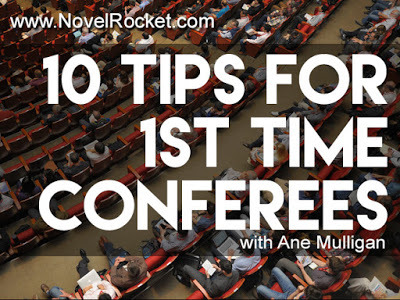 by Ane Mulligan, @AneMulligan
by Ane Mulligan, @AneMulliganSomeone recently said they were about to go to their first ACFW conference and they asked for advice. As a conference veteran—I've attended close to two dozen—I offer the following:
1. Don't be terrified. I promise you'll love it. Look for names you recognize. Don't be embarrassed to look at name tags. ACFW gives you Zone (regional) stickers to add to your name tag to help recognize other zone members. If you've been active on their e-loop, you'll likely recognize names. Look for your favorite authors.
2. Volunteer. If you can, go a day early and volunteer to help stuff packets or work the registration table. That gives you a few friends right from the start. At my first ACFW conference, I stuffed conference bags with Mike Ehret and we became friends. More amazing, we still are. We recently published a novella collection together.
3. Don't push yourself. If you start to feel overloaded, skip a class or a general session. Do something else or take a nap. There is no way you'll remember all the information you hear. You can always get the MP3 of that class later. My mantra is: if you take away one golden nugget of learning that moves your work to the next level, it was worth it.
4. If you're feeling lost or overwhelmed, find someone else who looks like they are, too. Reach out to that person. After all, you know how they feel.By befriending them, you'll find you no longer feel so lost.
5. If you plan to pitch to an agent or editor, practice at home and with friends. Covenant with a couple of pals who will call you at random unplanned hours and ask, "Tell me about your book." Do that until you stop swallowing your tongue or stuttering.
6. Remember, agents and editors are people, too. They are there to find the next great book. It might be yours! So use lunch and dinner to pitch at the tables, but don't monopolize the conversation. Practice until you can deliver your pitch in 30 seconds. Then close your mouth. If you babble on for a long time and don't give anyone else a chance, the editor/agent will think you do that in your writing, too. A good byword is: Less is more.
7. Networking is as big a part of conference as the classes and pitch sessions. That's how I met my critique partner, Lisa (Elizabeth) Ludwig. We met at the ACFW conference and have been writing buddies ever since. That was back in 2005 in Nashville.
8. Warning: Never ...I repeat...never follow an agent or editor into the restroom to pitch! Elevators are okay, after all they can't escape if they've already pushed their floor button. But the restrooms are off limits. And don't think it never happened. Just ask Steve Laube or Chip MacGregor.
9. Expectations: Most of all, don't set wild expectations. You will NOT be handed a contract at breakfast. Sorry to burst your bubble. It usually takes 3 or 4 books written before you're ready.
10. Belong:(especially if you're a fairly new writer) simply sit back and enjoy being among people who actually "get you." After all, we’re not "normals."
See y'all there!
TWEETABLES
10 Tips for a 1st-Time Conferee by Ane Mulligan (Click to Tweet)
Remember, agents and editors are people, too.~ Ane Mulligan (Click to Tweet)
Networking is a big part of conference.~ Ane Mulligan (Click to Tweet)
__________
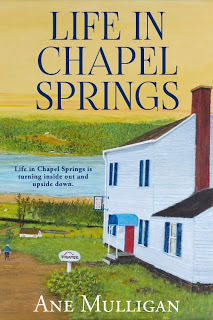 Life in Chapel Springs
Life in Chapel Springs
Life in Chapel Springs has turned upside down and inside out.
Is it a midlife pregnancy or … cancer? Claire will keep her secret until she’s sure—but it isn’t easy. Between her twins’ double wedding, a nationwide art tour and her health, life is upside down. Shy Lacey Dawson was happily writing murder mysteries for the community theater, but a freak accident results in traumatic injuries. When the bandages come off, Lacey’s world is tuned inside out. Gold has been discovered in Chapel Springs and the ensuing fever is rising.
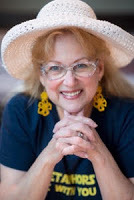 While a large, floppy straw hat is her favorite, Ane Mulligan has worn many different ones: hairdresser, legislative affairs director (that's a fancy name for a lobbyist), drama director, playwright, humor columnist, and novelist. Her lifetime experience provides a plethora of fodder for her Southern-fried fiction (try saying that three times fast). She firmly believes coffee and chocolate are two of the four major food groups. President of Novel Rocket, Ane resides in Sugar Hill, GA, with her artist husband. You can find Ane on her Southern-fried Fiction website, Google+, Amazon, Goodreads, Twitter, and Pinterest.
While a large, floppy straw hat is her favorite, Ane Mulligan has worn many different ones: hairdresser, legislative affairs director (that's a fancy name for a lobbyist), drama director, playwright, humor columnist, and novelist. Her lifetime experience provides a plethora of fodder for her Southern-fried fiction (try saying that three times fast). She firmly believes coffee and chocolate are two of the four major food groups. President of Novel Rocket, Ane resides in Sugar Hill, GA, with her artist husband. You can find Ane on her Southern-fried Fiction website, Google+, Amazon, Goodreads, Twitter, and Pinterest.

Published on August 17, 2017 02:00
August 16, 2017
Don’t Be Afraid of The Story
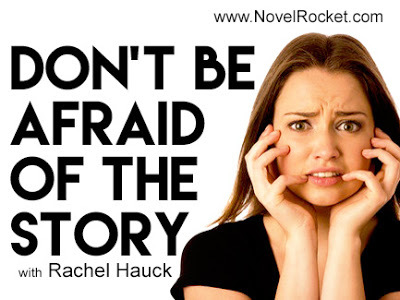 by Rachel Hauck, @RachelHauck
by Rachel Hauck, @RachelHauck A couple years ago as I fast drafted a novel, I realized I had this tension in my gut.
What was going on?
Yea, it’s tough to hammer out a first draft on a tight deadline but I was pleased with my progress. I wasn’t behind schedule. Though the story wasn’t really popping.
Hmm… the tension? I concluded I was actually afraid of my story.
We talk about being afraid of the blank page, but it’s really being afraid of the story.
Was I heading in the right direction?
Was the tension sustainable?
Did I even like this story?
Would my readers?
As the questions rose, I knew there were other things missing.
Was my setting right? Did I have the right research for my 1930s timeline?
How much of my heroine’s past really played into the story?
I was tense over what I didn’t know. And the fact I was sure I didn’t know it.
Makes perfect sense right?
A lot of times I get tripped up because I know that I know that I don’t know details and tidbits that would make my story deeper and richer.
When writing The Wedding Dress, I did a lot of research on Birmingham. In the process, I came across the convict leasing program.
When I decided to use it in the story, assigning it as a justice issue for my 1912 heroine, it made her more passionate and layered than if I’d left it out.
Plus, I could bring to light the injustice of the era.
And I got to write this great paragraph:
“The white guards talked and joked while the men of color swung axes and hammers against the hard concrete. Emily lowered her gaze. It must be back-breaking, near impossible, to break up what had been set and hardened with time in this city.”
See the metaphor? All from research. So when I’m in crunch mode and crisis, I start to think, “I need more research.”
I’ll panic with, “I need to read more books by all the writers in the whole world who are better than me so I can writer better books myself and ahhh!”
Yea, it’s stupid. It’s fear. It’s being afraid of the story.
Some of you are afraid of the story. Afraid to let go. You won’t submit to an editor or agent. You won’t let a writer friend read it. Maybe you keep revising and revising. Maybe you’re afraid to say, “This book is done. I need to move on to another book.”
The story has a life of it’s own, trust me I know. A will, a force that keeps us awake at night.
But face your fears. Don’t be afraid of the story, or what changes might come about.
Be of good courage. And go write something brilliant!
TWEETABLES
Don’t Be Afraid of The Story by Rachel Hauck (Click to Tweet)
Maybe you’re afraid to say, “This book is done. I need to move on."~ Rachel Hauck (Click to Tweet)
It's time to face your fears. And go write something brilliant!~ Rachel Hauck (Click to Tweet)
______________
 THE WRITING DESK
THE WRITING DESKTenley Roth’s first book was a runaway bestseller. Now that her second book is due, she’s locked in fear. Can she repeat her earlier success or is she a fraud who has run out of inspiration?
With pressure mounting from her publisher, Tenley is weighted with writer’s block. But when her estranged mother calls asking Tenley to help her through chemotherapy, she packs up for Florida where she meets handsome furniture designer Jonas Sullivan and discovers the story her heart’s been missing.
A century earlier, another woman wrote at the same desk with hopes and fears of her own. Born during the Gilded Age, Birdie Shehorn is the daughter of the old money Knickerbockers. Under the strict control of her mother, her every move is decided ahead of time, even whom she’ll marry. But Birdie has dreams she doesn’t know how to realize. She wants to tell stories, write novels, make an impact on the world. When she discovers her mother has taken extreme measures to manipulate her future, she must choose between submission and security or forging a brand new way all on her own.
Tenley and Birdie are from two very different worlds, but fate has bound them together in a way time cannot erase.
 New York Times, USA Today and Wall Street Journal best-selling, award-winning author Rachel Hauck loves a great story. She serves on the Executive Board for American Christian Fiction Writers. She is a past ACFW mentor of the year. A worship leader and Buckeye football fan, Rachel lives in Florida with her husband and ornery cat, Hepzibah. Read more about Rachel at www.rachelhauck.com.
New York Times, USA Today and Wall Street Journal best-selling, award-winning author Rachel Hauck loves a great story. She serves on the Executive Board for American Christian Fiction Writers. She is a past ACFW mentor of the year. A worship leader and Buckeye football fan, Rachel lives in Florida with her husband and ornery cat, Hepzibah. Read more about Rachel at www.rachelhauck.com.

Published on August 16, 2017 02:00
August 15, 2017
You Might Need to Wake Up
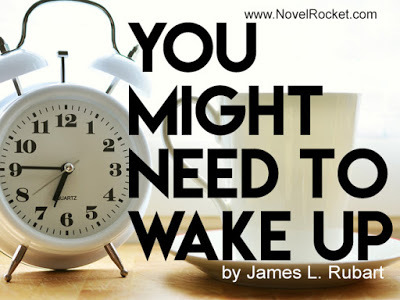 by James L. Rubart, @jameslrubart
by James L. Rubart, @jameslrubartAfter I won the Christy Award Book of the Year, a Carol Award for speculative fiction, and the ACFW Mentor of the Year last year, my son Taylor came to me and said, “Uh, Dad, do you think maybe it’s time you do more than teach workshops at conferences?”
“What do you mean?”
“You got published, hit the bestseller list, and started winning awards in four years. It takes most novelists ten on average, right?”
“Yeah.”
“So do you think anyone might want to know exactly how you did that? Show them how they can do it too?”
“Um, yeah, maybe.”
“No. Not maybe. Definitely.”
So Taylor and I created the RubartWriting Academy.
I was so close to it, I didn’t see the opportunity. Let this be a challenge to you, to look at where you might need to wake up in your life.
After I told Taylor he was right, I should start something to help frustrated writers, I thought about it and thought about it and thought about it, and did nothing. It wasn’t till Taylor said, “Let’s do it together. I’ll help you,” that it happened.
Now that it’s launched, I realize without Taylor, the Rubart Writing Academy would still be sitting in the “Someday” file in my brain. He has taken care of so many things I never would have gotten around to doing. He’s more organized than I am, more tech savvy, more than me in so many areas.
What I am giving up to have Taylor involved? Money. Fifty percent. Full control, because he gets a 50% vote. What am I gaining? A dream turning into reality that I couldn’t have done without him.
Your Turn
What are the things you’ve been meaning to do? Where do you need to wake up and say, “Yeah, I’m just not good at that, I need someone else to do it or it will never get done?”
It might cost you, yes. But what is the cost if you keep putting it off? I’m a firm believer that 50% of a $100 is worth way more than 100% of nothing.
Find your partner. Go after the dream. Make it happen.
TWEETABLESYou Might Need to Wake Up by James L. Rubart (Click to Tweet)
What are the things you’ve been meaning to do?~ James L. Rubart (Click to Tweet)
Find your partner. Go after the dream. Make it happen.~ James L. Rubart (Click to Tweet)
__________
The Long Journey to Jake Palmer

What if there was a place where everything wrong in your life could be fixed?
Corporate trainer Jake Palmer coaches people to see deeper into themselves—yet he barely knows himself anymore. Recently divorced and weary of the business life, Jake reluctantly agrees to a lake-house vacation with friends, hoping to escape for ten days.
When he arrives, Jake hears the legend of Willow Lake—about a lost corridor that leads to a place where one’s deepest longings will be fulfilled.
Jake scoffs at the idea, but can’t shake a sliver of hope that the corridor is real. And when he meets a man who mutters cryptic speculations about the corridor, Jake is determined to find the path, find himself, and fix his crumbling life.
But the journey will become more treacherous with each step Jake takes.
 James L. Rubart is 28 years old, but lives trapped inside an older man's body. He thinks he's still young enough to water ski like a madman and dirt bike with his two grown sons, and loves to send readers on journeys they'll remember months after they finish one of his stories. He's the best-selling, Christy BOOK of the YEAR, INSPY, CAROL and RT Book Reviews award winning author of eight novels as well as a professional speaker, co-host of the Novel Marketing podcast, and co-founder of the Rubart Writing Academy. During the day he runs his branding and marketing company which helps businesses, authors, and publishers make more coin of the realm. He lives with his amazing wife on a small lake in eastern Washington. More at www.jameslrubart.com
James L. Rubart is 28 years old, but lives trapped inside an older man's body. He thinks he's still young enough to water ski like a madman and dirt bike with his two grown sons, and loves to send readers on journeys they'll remember months after they finish one of his stories. He's the best-selling, Christy BOOK of the YEAR, INSPY, CAROL and RT Book Reviews award winning author of eight novels as well as a professional speaker, co-host of the Novel Marketing podcast, and co-founder of the Rubart Writing Academy. During the day he runs his branding and marketing company which helps businesses, authors, and publishers make more coin of the realm. He lives with his amazing wife on a small lake in eastern Washington. More at www.jameslrubart.com

Published on August 15, 2017 02:00
August 14, 2017
How Many Books Are Too Many?
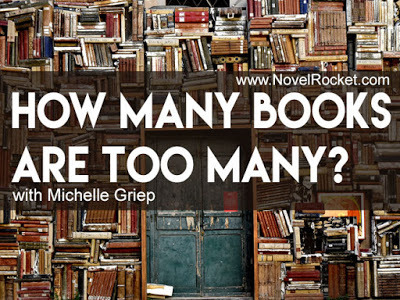 by Michelle Griep, @MichelleGriep
by Michelle Griep, @MichelleGriepWhich would you rather have your favorite author do . . .
Pump out three books a year, maybe a little lighter in content, the characters not quite as complex, and the plot is a bit predictable.
-- or --Write one book in a year with multi-faceted characters, a twisty-turny plot, and a theme that makes you wonder about life's big meanings.
Your choice? And no, you can't have it both ways, not consistently. So pick one. Go ahead. I won't judge you . . . leastwise not on this issue. Shoes are an altogether different topic.
Personally, I like a meaty, heavy-fisted book that whacks me upside the head. But that's just me. If you answered differently, then more power to you, Scooter, because here's the deal . . . there are two distinct types of readers:
Those who devour books like there's no tomorrow, who are satisfied with an entertaining story that's not necessarily profound. Those who like to dig into the what if's and how come's of life in a story format.And you know what? That's great news for you, writer, because it gives guilt the big beat down. You need no longer feel pressure to either ramp up or down your writing speed.
Writers are psychotic little mammals, all worried about if they're putting out enough books in a certain amount of time or if what they're putting out is too fluffy. Yet in light of reader diversity, open your arms wide writer, because there's a place at the readerly table for you.
If you're a writer who loves to pound out words at high speed and have so many plot ideas you could type your little fingers to nubbies, then do it and quit fretting about not having themes that vibrate a reader's heartstrings for months afterward.
Or if you're a writer who's slow but sure, anguishing about word placement and choice, and the thought of finishing two books in a year is not only exhausting but devastating, then listen to this round of applause. It's okay to not work at lightspeed.
Newsflash: there is no magic number of how many books you need to put out in a year, despite what marketing gurus say, because readers are as diverse a group as writers.
Guilt about what you create and how you create it will suck the joy right out of your bones—and ain't nobody got time for that.
TWEETABLES
How Many Books Are Too Many? by Michelle Griep (Click to Tweet)
There are two distinct types of readers~ Michelle Griep (Click to Tweet)
There's no magic number of how many books you need to put out in a year.~ Michelle Griep (Click to Tweet)
 _________
_________12 Days at Bleakly Manor
Imprisoned unjustly, BENJAMIN LANE wants nothing more than freedom and a second chance to claim the woman he loves—but how can CLARA CHAPMAN possibly believe in the man who stole her family’s fortune and abandoned her at the altar? Brought together under mysterious circumstances for the Twelve Days of Christmas, Clara and Ben discover that what they've been striving for isn't what ultimately matters . . . and what matters most is love.
 Author Michelle GriepMichelle Griep’s been writing since she first discovered blank wall space and Crayolas. She is the author of historical romances: The Innkeeper’s Daughter, 12 Days at Bleakly Manor, The Captive Heart, Brentwood’s Ward, A Heart Deceived, Undercurrent andGallimore,but also leaped the historical fence into the realm of contemporary with the zany romantic mystery Out of the Frying Pan. If you’d like to keep up with her escapades, find her at www.michellegriep.com or stalk her on Facebook, Twitter, or Pinterest.
Author Michelle GriepMichelle Griep’s been writing since she first discovered blank wall space and Crayolas. She is the author of historical romances: The Innkeeper’s Daughter, 12 Days at Bleakly Manor, The Captive Heart, Brentwood’s Ward, A Heart Deceived, Undercurrent andGallimore,but also leaped the historical fence into the realm of contemporary with the zany romantic mystery Out of the Frying Pan. If you’d like to keep up with her escapades, find her at www.michellegriep.com or stalk her on Facebook, Twitter, or Pinterest.

Published on August 14, 2017 02:00
August 13, 2017
3 Steps to Overcome Idea Hoarding
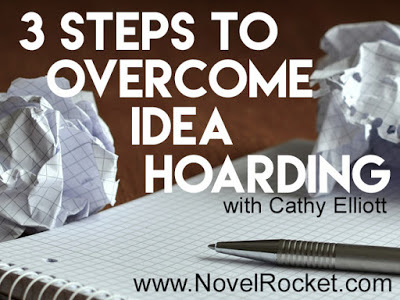 by Cathy Elliott, @CathyElliott10
by Cathy Elliott, @CathyElliott10When I wrote my first cozy mystery, A Vase of Mistaken Identity, ideas flooded my brain, vying for attention and fighting to be first on the page. I typed at a crazed pace, anxious to release all this creativity. I was on-a-roll, to use an overused cliché, until some wayward questions shoved their way into my mental space and began to bellyache.
What if I run out of ideas? How do I find more when these are all used up? Since I hoped to have a second Thea James adventure after this one, I worried nothing interesting would remain for the next book. No clever puns, no sparkling dialogue, no captivating scenes. Where do they come from if I put all I have into my first tome?
These pesky thoughts replaced my comfortable, imaginary chest of unending words and phrases. Afraid to use what was at hand, I slowed down…and worried instead. Lines I planned to use in my current manuscript were stored on sticky notes, clipped together, and labeled, “Save for Book II.” Grinch-like with my stash, I told them, “Okay, I’ll use you now. But you and you must wait for the next novel. And stop whining!”
Then came the looming question, would there even be a next novel? Mine was a one-book deal, so it wasn’t a given. After days of hand-to-hand combat with my concerns, I came out victorious, possessing tools to free me from myself. As well as any evil-urchins, circling, plotting to steal my joy. Here’s how I broke free:
1. First, I prayed. Seems so simple, no? Yet sometimes it was the last thing I remembered to do. Unable to reason my way out of the self-doubt most of us experience on the writing journey, I had no choice but to seek God. I needed peace and wisdom in order to progress further. Prayer opened the door out of my inner chaos.
2. Then, I reached out and asked for help. Organizing what I called a Plot Party, I invited several writing buddies out for pie & coffee at a local Marie Callendar’s. We brainstormed my book first, and with passion. Soon one of my friend’s trouble spots hit the table, too. Everyone joined in to add rescue-comments for her. It was like an idea stampede. We scribbled notes as if afraid a few might escape our literary lassos. Some suggestions, though interesting, weren’t quite where I wanted my character or story to go. Still, they sparked other ideas I could use. Corralling affable authors together resulted in this author lugging home a wealth of inspiration. (I think my muse hitched a ride, as well.)
3. Finally, I placed my trust in The Great Author. Another simplistic solution? Yes and no. Simple, but not always easy. And why not? He had given me favor with editors and a wonderful agent, all beyond expectation. My book deal was by His Hand. He even provided the story. When I thought about how God had orchestrated it all, why did I doubt there would be more when and if I needed it?
A friend, knowing my doubts, pointed to the story of the widow’s oil from II Kings 4. The widow, besieged by creditors who wanted to take her sons as slaves in payment, came to Elisha to beg for help. She had nothing but a small jar of olive oil. Elisha told her to have her sons borrow all the empty jars they could and then instructed her to pour out the oil until each jar was full. She did so, filling all the jars. After selling the jars of oil, they paid off their debts, and lived on the rest.
Through her act of pouring out, the oil was multiplied. In God’s economy, the way to increase what I have is to use it. Not in hoarding. When I pour it out; He pours more in.
Truly, the God who has called us to write has unlimited resources for our purposes. “Those whom God calls, He equips,” writes Walter Bright on his blog. Reminiscent of the old adage, “God does not call the enabled, He enables the called.”
A familiar hymn tells us to “Trust and Obey.” Wise words. Once we do, we are free to use the very best we have, secure in the knowledge that more will come when needed.
Right on time.
TWEETABLES
3 Steps to Overcome Idea Hoarding by Cathy Elliott (Click to Tweet)
Afraid you'll run out of ideas? Here's a good solution.~ Cathy Elliott (Click to Tweet)
In God’s economy, the way to increase what I have is to use it.~ Cathy Elliott (Click to Tweet)
________
A Stitch in Crime by Cathy Elliott
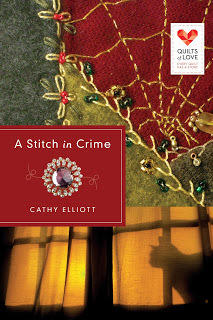 Assault, larceny, anonymous threats. Who knew quilt shows could be this dangerous?
Assault, larceny, anonymous threats. Who knew quilt shows could be this dangerous?Thea James thought working as co-chair for Larkindale’s first quilt show extravaganza would be a natural extension of her antique business. But while organizing the busy week’s premiere events would make anyone frayed, she doesn’t expect a complete unraveling!
At the opening soirée, local matriarch Mary-Alice Wentworth is knocked unconscious and robbed of her diamond brooch. Soon a rare quilt—the main attraction and a rumored key to great riches—goes missing. Those who signed up to help Thea are strangely no help at all. What more could possibly happen?
Amid a cast of colorful characters and a tight schedule of garden galas, tea parties, and televised socials, everything is falling apart at the seams – and nothing is quite what it seems. Can Thea sew everything back together?
"...Fans of inspirational fiction will enjoy the funny, feel-good whodunit."
Publishers Weekly Review
“…There is mystery and laughter, and Elliott’s characters are strong, confident and determined to make their mark….Fans will want to add this gem to their keeper shelf.” RT 4-Star Review
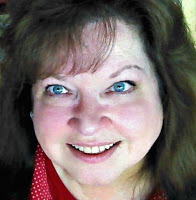 Cathy Elliott is a full-time writer in northern California whose mysteries reflect her personal interests of crafting and collecting. She also leads music at church and cherishes time with her grandchildren. In addition to various articles and anthology contributions, Cathy’s written ten children’s books for classroom use. Her plot-twisting works include A Vase of Mistaken Identity, Medals in the Attic, and A Stitch in Crime. She is also a contributing author to Guidepost’s Every Day with Jesus releasing in 2017.
Cathy Elliott is a full-time writer in northern California whose mysteries reflect her personal interests of crafting and collecting. She also leads music at church and cherishes time with her grandchildren. In addition to various articles and anthology contributions, Cathy’s written ten children’s books for classroom use. Her plot-twisting works include A Vase of Mistaken Identity, Medals in the Attic, and A Stitch in Crime. She is also a contributing author to Guidepost’s Every Day with Jesus releasing in 2017.For more information about Cathy, visit her at: www.cathyelliottbooks.com


Published on August 13, 2017 07:38
August 12, 2017
How to Grow Your Email List with Ryan Zee
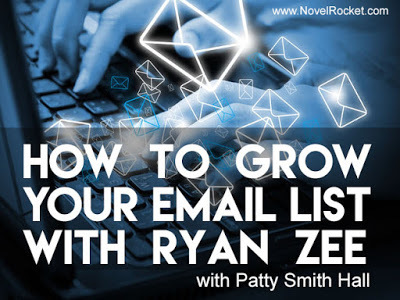 by Patty Smith Hall, @pattywrites
by Patty Smith Hall, @pattywritesOne of my goals for 2017 has been to develop a quality newsletter that I could release each quarter. A nice goal, but with only 32 names on my list--I’ve got to remember to put out those sign-up sheets--it almost seemed like a waste of time.
Enter Ryan Zee.
For those unfamiliar with this marketing website, Ryan Zee works with authors to grow their social media presence through 1) building email lists for author newsletters and 2) growing your following on Amazon and Bookbub. For our purpose today, we’re only going to focus on email lists.
Here’s how it works: each week, Ryan Zee opens, a new genre focused contest. One week, it could be historical romance; the next small-town romance. The genres vary widely from erotic to Christian fiction so finding a contest with your genre is relatively easy. Sometimes, they even break them down according to publishers like the one they ran for Harlequin authors last December. Each contest generally has ten to twenty-five authors participating.
Once you chose the contest you’d like to participate in, you submit your book and pay a small fee—usually around $50. You will also be asked to give 2 copies of your novel or novella, e-book or hard copy to the winners of the drawing. When your application is accepted, the site provides you with a custom-made graphic to post on your Facebook and web page as well as a contest landing page made specifically for your contest. There are also tips on how to increase your social media presence as well as updates on the contest progression.
Once the contest is over, you’re receive the names of the two winners. In every contest, the first-place winner receives an e-reader as well as a copy of every book advertised while the second-place winner receives books.
A week to ten days after the contest is completed, you’ll receive a file with readers’ email addys. To clarify, the reader has a choice as to which author newsletter they will receive. In other words, if there are 2400 readers who enter the contest and you receive 900 of those email addys, it is because those readers chose your mailing list. They’re interested in your work.
So what kind of results did I have using Ryan Zee? My email list grew from an anemic 32 to well over 900 after my first contest. I added another 700 with the Harlequin contest previously mentioned. While the site offers a 50% open rate, I saw an open rate of 60.5% as compared to the industry standard of 14.9%. The click-through rate was steady at 6.9(industry standard—1.5) A little over a hundred unsubscribed after the second newsletter. From this list, I organized a street team of 15 dedicated readers.
The only downside I found in using Ryan Zee is availability. Slots fill up quickly so it’s best to check the website each week for updates on future contest. Another way to work around this is to organize with other author who are looking to expand their email list. Ryan Zee will set up a contest for your group.
TWEETABLES
How to Grow Your Email List with Ryan Zee by Patty Smith Hall (Click to Tweet)
Ryan Zee works with authors to grow their social media presence~ Patty Smith Hall (Click to Tweet)
My email list grew from an anemic 32 to over 900 after my first contest.~ Patty Smith Hall (Click to Tweet)
__________
 Seven women seek husbands to help them rebuild a Kansas town.
Seven women seek husbands to help them rebuild a Kansas town.Meet seven of Turtle Springs, Kansas’, finest women who are determined to revive their small town after the War Between the States took most of its men. . .and didn’t return them. The ladies decide to advertise for husbands and devise a plan for weeding out the riff raff. But how can they make the best practical choices when their hearts cry out to be loved?
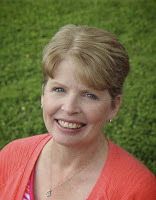 Patty Smith-Hall is a multi-published, award-winning author with Love Inspired Historical/Heartsong and currently serves as president of the ACFW-Atlanta chapter. She currently lives in North Georgia with her husband of 30+ years, Danny; two gorgeous daughters and a future son-in-love. Her next release, New Hope Sweethearts will
Patty Smith-Hall is a multi-published, award-winning author with Love Inspired Historical/Heartsong and currently serves as president of the ACFW-Atlanta chapter. She currently lives in North Georgia with her husband of 30+ years, Danny; two gorgeous daughters and a future son-in-love. Her next release, New Hope Sweethearts willbe available in July on Amazon.


Published on August 12, 2017 02:00
August 11, 2017
Kintsugi Creativity
 by Allen Arnold, @TheStoryofWith
by Allen Arnold, @TheStoryofWithWe all have scars. Most are unseen. But visible or not, every scar cuts deep. Betrayal from those we trusted. Silence when we needed support. Conditional love based on our performance. It’s amazing how many ways a heart can be shattered.
And for the most part, these wounds weren’t accidental. We have an enemy whose aim is to steal, kill, and destroy - both the Story you're living and the ones you're writing. And his strikes are strategic, attacking you at your points of purpose. Which is why the areas of your life that have been the most opposed often hold clues to your unique calling.
The scars that brought shame or harm weren’t from God nor were they meant for good. But God can bring healing to those wounds. The world tells us to hide our scars. Perhaps they represent a past you’d rather forget. Yet God offers a far better option - to redeem our broken places.
Which brings us to kintsugi. This Japanese art form dates back to the late 15th century and takes a very different approach than our modern culture to all things broken. We quickly trash and replace items with cracks or flaws. But these ancient artisans discovered a way to make the broken beautiful again by infusing golden lacquer into their fractured pottery.
But wouldn’t that just highlight the brokenness of the item?
Exactly. Rather than hide the imperfections, they illuminated them by filling the cracks with shimmering gold. They actually viewed the repaired item as more valuable than it had been, because now it was a one-of-a-kind original with its unique lines of gold. They honored the history of the piece by not just making it useable but by making it better.
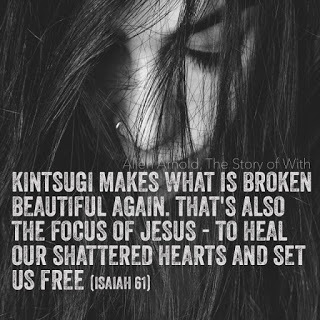 Jesus understands. When asked the focus of his mission, he quoted a passage from Isaiah 61, saying the reason he came was to heal our shattered hearts and set us free. In the very places the enemy has tried to derail or destroy our story, Jesus steps in and heals our fractured lives. He doesn’t just set us in a brace; he sets us free.
Jesus understands. When asked the focus of his mission, he quoted a passage from Isaiah 61, saying the reason he came was to heal our shattered hearts and set us free. In the very places the enemy has tried to derail or destroy our story, Jesus steps in and heals our fractured lives. He doesn’t just set us in a brace; he sets us free. The Creator can put the fragments of your life and heart back together again with His healing light. And when the Creator heals you, then you are infused with his healing power. During my two decades in Christian publishing, I worked with hundreds of novelists. Whether new voices or well established authors, the most powerful storytellers were always the ones whose scars had been transformed into weapons of light that illuminated their stories with a glow all their own. Their voice was unique and the themes they infused their novels with shimmered with an eternal glow.
That’s the power of Kintsugi Creativity.
If you are intrigued by the concept, I invite you to read my book The Story of With . It’s an allegory that goes further into this theme, revealing a better way to live and create. Kintsugi plays a major role in the journey of the protagonist Mia. The book’s cover even features a glass vial glistening with the glow of kintsugi.
The scars of your story can become the source of your strength. God’s kintsugi doesn’t make things almost as good as new. Through his touch, they become better than new.
May your scars – and your stories - glow with his healing light of kintsugi.
TWEETABLES
Kintsugi Creativity by Allen Arnold (Click to Tweet)
Areas of your life that have been the most opposed often hold clues to your unique calling.~ Allen Arnold (Click to Tweet)
The scars of your story can become the source of your strength.~ Allen Arnold (Click to Tweet)
__________
The Story of With: A Better Way to Live, Love, & Create

"Unique and powerful, The Story of With will take readers deep into the discovery of their own identity. "Bravo! This fascinating blend of storytelling and teaching will shift the thinking of all who take this journey." New York Times Bestselling Author, TED DEKKER
"Through allegory and invitation, Allen Arnold ushers us into a journey of imagination, insight, wonder, and wisdom...Read The Story of With!" New York Times Bestselling Co-Author of Captivating, STASI ELDREDGE
"This is your invitation into deeper identity, intimacy, and imagination with God. Like finding the place you've always longed to be. The moment you finish this book, you'll race to grab one for a friend. Highest Recommendation!" Bestselling Author of The Long Journey to Jake Palmer, JAMES L. RUBART
"Allen has written a roadmap for dreaming with God. The Story of With is a beautiful, revelatory parable, filled with wonder, mystery, and adventure." Author of Prone to Love & Untamed, JASON CLARK
- From the Foreword -
"You are not alone. Whether you’re a free spirit, an office exec, a writer, musician, college student, or tired parent—your soul, like mine, knows life is meant to go beyond rat races and rare applause. This book speaks to that belief. And if you’re not careful, you may find tears warming your eyes as you read because finally someone is naming your weariness, your striving, your questions of why you just can’t quite make it, or the emptiness that hit because maybe you did. It is into those places The Story of With reaches—fusing allegory with application—to offer fresh perspective, restored hope, and a rebirth of creativity.”
—From the Foreword by Mary Weber, Christy & Carol Award-Winning, Scholastic Pick Author of the Storm Siren Trilogy.
 Allen Arnold is the author of The Story of With, an allegory that reveals a better way to live and create through the doorway of identity, imagination, and intimacy. His mission is to help people actively pursue and transform their talent by discovering how to pursue it with God. As the founding Fiction Publisher for one of the world's largest Christian publishing houses, Allen oversaw the development of more than five hundred novels. He knows first-hand how common it is for creators to become disheartened, overwhelmed or burnt-out–as well as what it takes to help the dreams of writers become reality. In his current role at Ransomed Heart, he oversees content from the mountains of Colorado for the ministry. Before becoming a Board Member for ACFW, he was awarded their Lifetime Achievement Award in 2012 for his substantial contributions to the world of Christian Fiction.
Allen Arnold is the author of The Story of With, an allegory that reveals a better way to live and create through the doorway of identity, imagination, and intimacy. His mission is to help people actively pursue and transform their talent by discovering how to pursue it with God. As the founding Fiction Publisher for one of the world's largest Christian publishing houses, Allen oversaw the development of more than five hundred novels. He knows first-hand how common it is for creators to become disheartened, overwhelmed or burnt-out–as well as what it takes to help the dreams of writers become reality. In his current role at Ransomed Heart, he oversees content from the mountains of Colorado for the ministry. Before becoming a Board Member for ACFW, he was awarded their Lifetime Achievement Award in 2012 for his substantial contributions to the world of Christian Fiction.

Published on August 11, 2017 02:00



